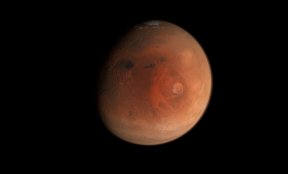The James Webb Space Telescope (JWST) is quietly revolutionising astronomy, photographing the early Universe, and breaking records for its new discoveries every other week. For example, just a month or so ago it broke the record for finding the oldest galaxy humans have ever laid eyes on. Again. Because the same record had also been broken just months before that. It's called MoM-z14, because in some scientist's head that makes complete sense 1.
Thanks to the nature of light, when we see a really old galaxy like MoM-z14 what we are actually seeing is it as an infant but a really, really long time ago. If the Universe is a 50-year-old human, we are seeing photos of MoM-z14 from around its first birthday.
Speaking of the JWST let's break for a quick update on where it is. If you draw a straight line from the Sun, through the Earth, and continue going for another 1.5-million km, that's where the telescope is. It seems a bit random but that's a special position in space relative to the Sun and Earth called the L2 Lagrange point. Because of the balanced gravitational conditions that exist at L2, the telescope can orbit the Sun with the same period as the Earth and remain aligned to us. That's great for easy communications back to Earth.
As an extra bonus, L2 is also a thermally stable environment where the telescope's sunshield can be pointed in one direction (towards the Earth and Sun, which are in the same direction from the telescope) to block the two main sources of heat and light. That's important because when you are looking for specks of light billions of light years away, your instruments need to be as cold as possible to avoid corrupting your data.
But how hot can it really be out there in space, I hear you ask? NASA has you covered. The temperature on the Sun facing side of the sun shield is a warm 50°C. But on the other side, the cold side, it's -236°C. That's one effective sun shield. And it gets better. The mid-infrared instrument sits at -267°C which is just 6°C above absolute zero. Absolute zero being what it is, the coldest temperature you can have and the point at which atoms just kind of freeze in place (well, almost, but I'm not getting into a discussion on quantum mechanics here), that is cold. Really, really, cold. Great conditions for observing a young Universe.
Astronomers have put all that power to great use, and they've recently found a particularly interesting galaxy called the Infinity Galaxy. In fact, this 'galaxy' is a couple of disk-shaped galaxies colliding with one another, each with its own supermassive black hole at its centre. You can think of it as two Milky Way galaxies side-by-side such that their edges are touching. So far, not all that exciting. Except... There seems to be a third black hole, between the two galaxies and embedded in a giant gas cloud. So here's the mystery. How do you get a supermassive black hole just sitting there by itself, rather than being at the core of a galaxy like all the others we know of?

We do have a couple of theories about how these giant black holes form. One says that they start small and get bigger through collisions with other black holes. Such a process can take an extraordinarily long time, but hey, the Universe is about 14-billion years old, so no surprise that we see supermassive black holes now. But in the early Universe?
There is another theory that if you take a giant gas cloud and pack it with enough mass, it could collapse directly into a supermassive black hole. No need for collisions or other time-consuming processes. The third black hole in the Infinity Galaxy provides some pretty nice evidence for this direct collapse theory, which, by the way, might also then explain why Webb has seen so many enormous black holes in the early Universe. The ones the media has been having conniptions over for months (even years), because they wouldn't have had time to grow to such a size in a young Universe. These 'impossible black holes' (Google it) may not be impossible after all if they formed by the direct collapse of giant gas clouds.
Oh, and if you were wondering why this galaxy is called the Infinity Galaxy, it's not because it has persisted through time and space over eons and will continue to do so into the infinite future. No, it's nothing poetic like that. It’s because it looks a bit like an infinity symbol, an 8 on its side. You'll need to squint just a bit, like we did for the Virgin Mary grilled cheese on toast that sold on eBay 20 years ago for nearly $30,000. Anyway, score another win to human ingenuity – I'm talking about the telescope, not the toast.
-
The name MoM-z14 reflects the fact that this galaxy was discovered as part of the "Miracle or Mirage" survey and is at a redshift of z=14. ↩





